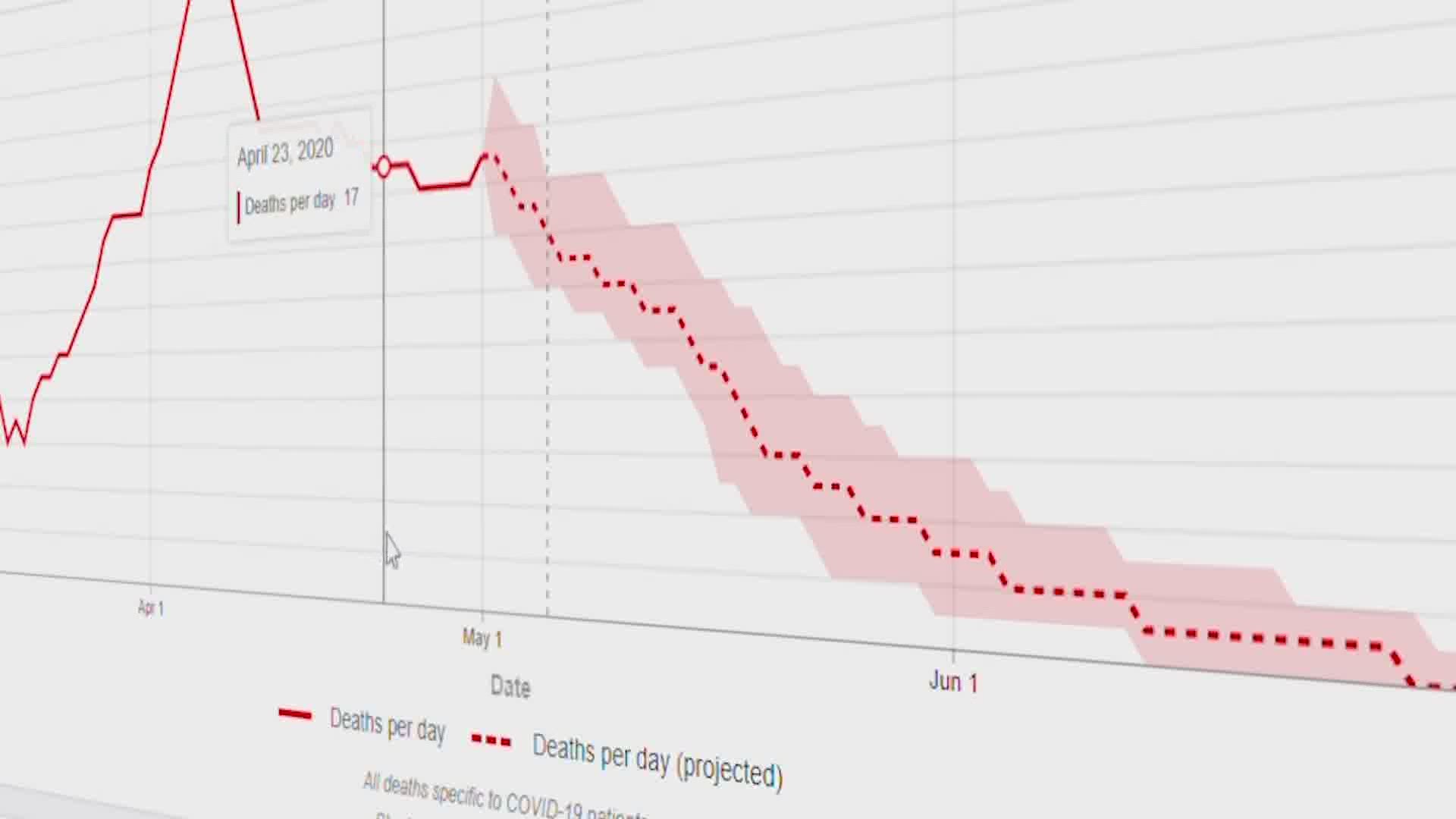The University of Washington's Institute for Health Metrics and Evaluation predicts there will be more than 134,000 coronavirus related deaths nationwide by Aug. 4.
That was the headline that screamed across the country this week, and was repeated by the White House. It is a number that would be double previous projections.
"(It is) because we are seeing more mobility, that many states who have prematurely relaxed the social distancing. And we are seeing more and more presumptive best being added, and we are seeing some outbreaks in the Midwest," said Dr. Ali Mokhad of the IHME.
There is a lot of data that goes into modeling the possible spread of the coronavirus pandemic. Mokhad says his team not only looks at mobility trends, but takes into account temperature, density and testing rates.
The methodology is not shared by all. In fact, MIT, Columbia and other epidemiologists use different factors, and using reinfection rates, for instance, to determine their model.
But no one is forecasting an end to the crisis.
"The models, all of them are telling us exactly the same story. We have a deadly virus that is circulating in our population. And we have to be extra careful. And all the models are telling us when you when you apply social distancing measures, the transmission of the virus will decline. The mortality will decline and demand on our on our health facilities will decline."
But on a local level, there are some positive signs. The New York Times published a database Wednesday that shows the number of new cases in the last two weeks in the greater Seattle area dropping.
It lists new cases in the last two weeks at 0.57 per 1,000 people, which is 217th in the survey. By comparison, Sioux City, Iowa has a rate of 13.20 cases per 1,000 people, putting it at the top of the survey. The same data set lists new deaths in Seattle in the past two weeks at 0.03 per 1,000.
Seattle Mayor Jenny Durkan said despite the trend, it's not time for local residents to be complacent.
"While we have done a good job of curbing the transmission, we went from almost three — which is for every person who had the virus, they gave it to three people — to less than one, which is exactly where we need to be," said Durkan. "Now we just got to make sure as people come together more that virus doesn't increase to a point where it runs out of control."
With that in mind, Durkan said the city of Seattle still encourages people to avoid gathering in public parks and to keep moving if they take a walk in one.
"We want to make sure we keep that downward trajectory for at least two weeks, which is the CDC recommendation, (or) three weeks, which is where some of the experts thinks we need to be," Durkan said. "We also want to get to some low number that we have of new cases every day on a three-day rolling average, because that will tell us how quickly the virus is growing."
She said the city does not want to see a resurgence of cases.
"I think we've gotten to the point where we've got the capacity...in our hospital system, but as you reopen, you want to look at that so you know you're not overwhelmed," she added.
Watch KING 5's full interview with Seattle Mayor Jenny Durkan:

